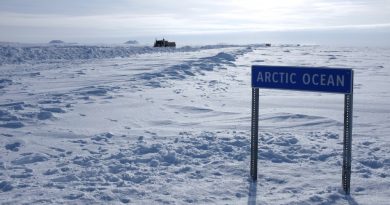These Labrador teens built their own kayak to save a tradition going back millennia
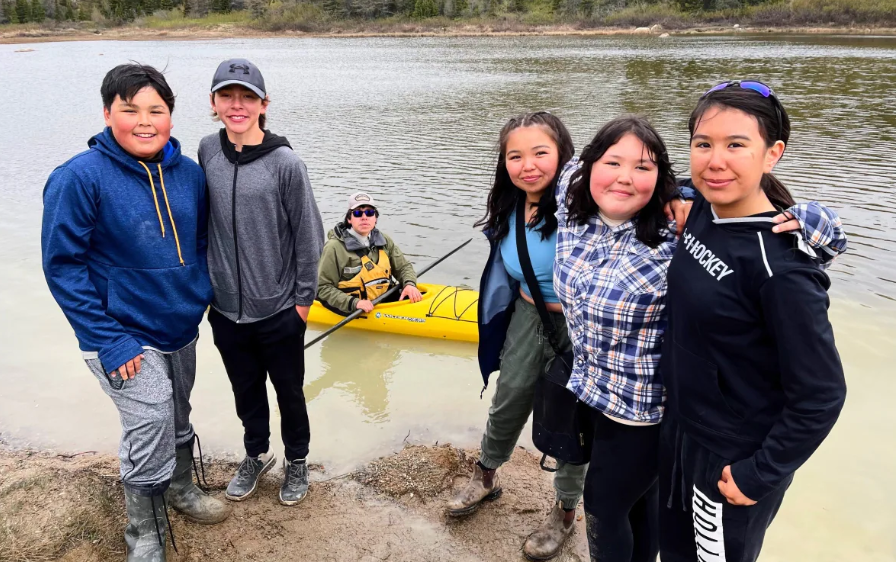
After a short 10 minute lesson on the shore of a small pond, four students from Jens Haven Memorial School became the first ones to step into the kayak they built in in the northern community of Nain.
The Grade 8 class of 15 students spent the winter building the boat in the school’s woodshop. Kayak teacher and Nunatsiavut’s Kayak Revival lead, Noah Nochasak, said the students did well.
The kayak, he said, requires a keen eye and technical prowess. It’s not easy to make.
“Most adults I know would struggle to finish one,” Nochasak said. “So the fact that people that are 13 follow directions and literally can tell you stories about how they made the kayak, that’s saying something.”
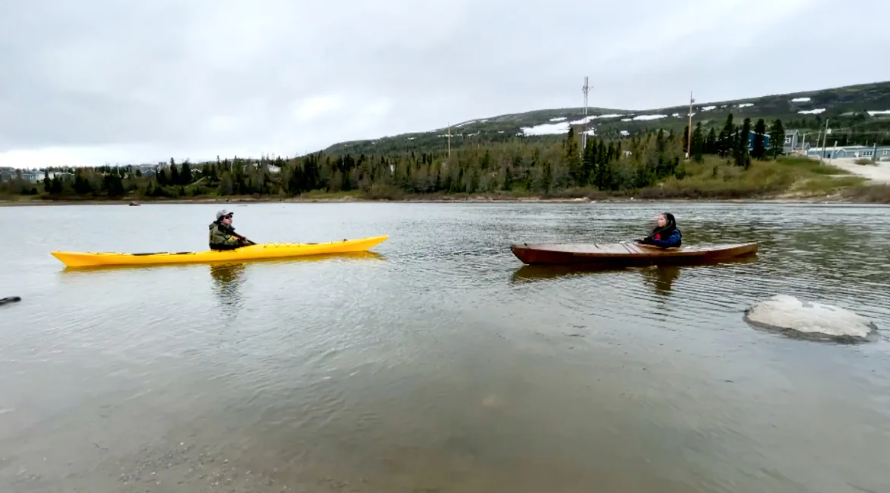
They polished off their boat as the school year wound to a close in June. On a rainy day, the students, principal, Nochasak and woodshop teacher Kent Chaulk loaded it up onto Nochasak’s silver Toyota Cruiser and slowly transported it to a nearby pond.
Five students decided to try it out. Nochasak gave them a short lesson on the shore before they gently set the synthetic skin kayak in the water between two rocks.
Grade 8 student Johnny Jararuse said he’d never built anything like this before.
“We’re losing our culture and how to do stuff like how we used to. So it’s good to bring it back a little bit,” Jararuse said.
Another student, Serena Blake, said it was interesting the school was able to have the program because typically smaller communities don’t get those experiences. The class also learned the Inuttitut names for the different kayak parts.
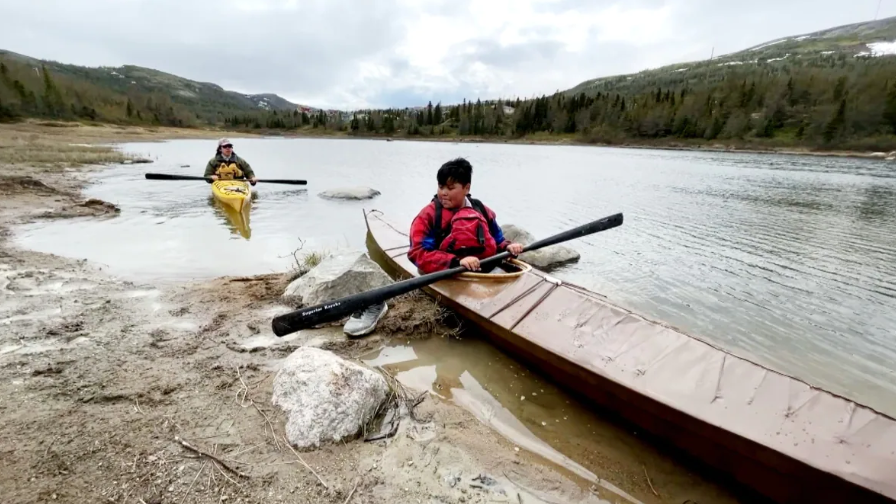
“It was something new, finally, because it was good to bring our language back for a little bit,” Blake said.
“To bring it back, to actually learn something for our students here, that is good learning because we need stuff like that … coming instead of just leaving it behind.”
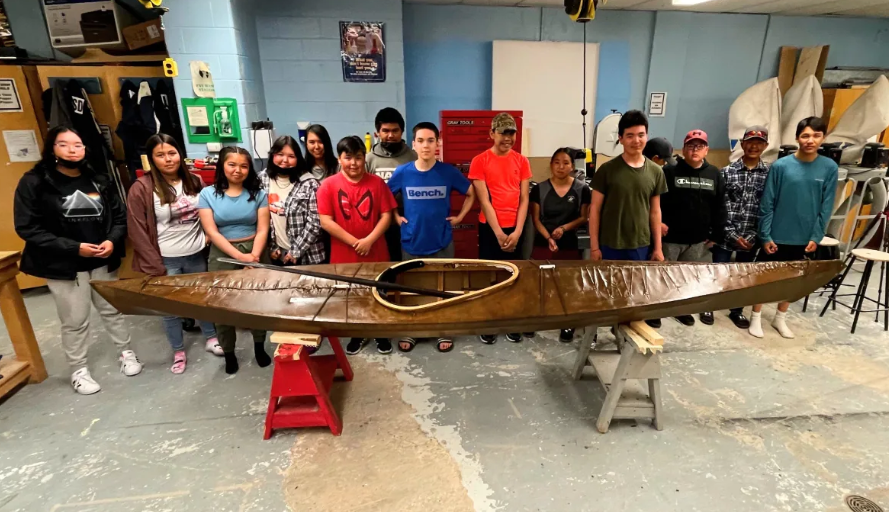
Chaulk said the idea to build a kayak in the school was the former principal’s. She connected him and Nochasak and the two started conversations around 2019, and ordered a kayak kit so the students would have a starting point.
The kit arrived in March 2020, when the school was in the middle of closing due to the COVID-19 pandemic. The build was on hold until restrictions were lifted and community members could enter the school in February of this year.
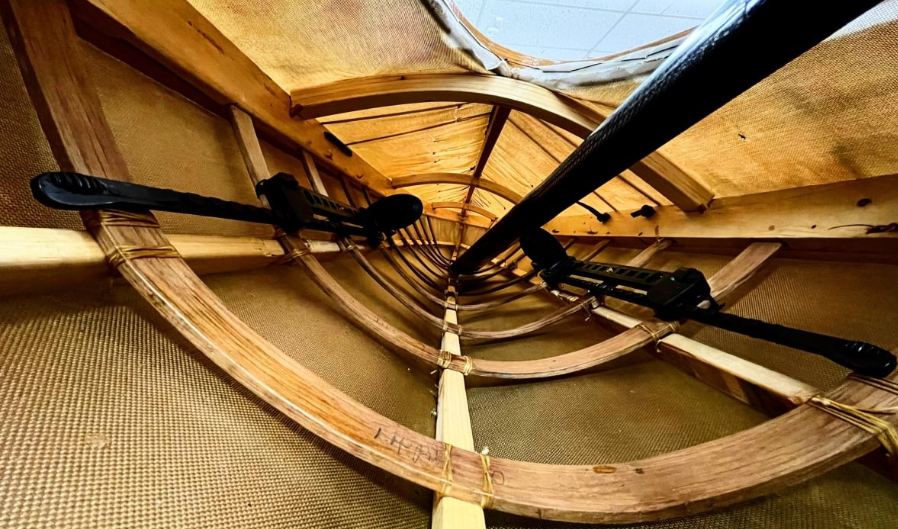
“Many of these kids probably didn’t have a lot of skills coming into this with regards to using hand tools and especially power tools,” Chaulk said. “They did a really good job.”
Chaulk said he hopes the program continues for future Jens Haven Memorial students and the students take it upon themselves to work on their own projects in the future.
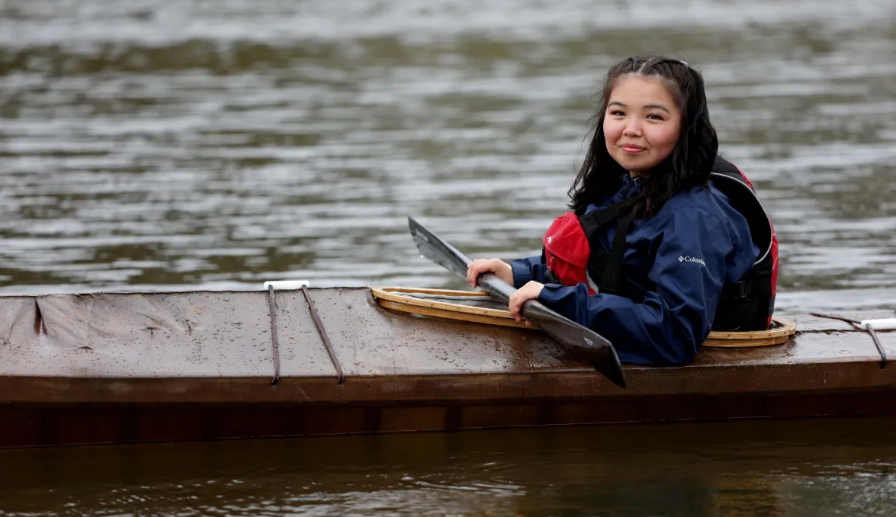
Teagan Michelin, one of the students who steered the kayak, said building it hands-on was more educational than looking at kayaks in books, but she was nervous about getting in it for the first time.
“I thought if I went in, I was going to tip over,” Michelin said.
Nochasak hopes the students continue having an interest in the kayak in the future now that they know their ancestral connection to it.
“Using the kayak was passed on among Inuit for thousands of years, and you would feel a little sad to see something go on for thousands of years and then not be the one to pass it on,” Noachasak said. “It had meaning to them. And that’s really special to see.”
Related stories from around the North:
Arctic: Inuit artists in their own words, Eye on the Arctic
Canada: Canadian Inuit leader says Vatican Museums open to repatriating Indigenous artifacts, CBC News
Finland: Sami Parliament in Finland agrees more time needed for Truth and Reconciliation Commission preparation, Eye on the Arctic
Norway: Sami education conference looks at how to better serve Indigenous children, Eye on the Arctic
Sweden: Sami in Sweden start work on structure of Truth and Reconciliation Commission, Eye on the Arctic
United States: Alaska reckons with missing data on murdered Indigenous women, Alaska Public Media.

